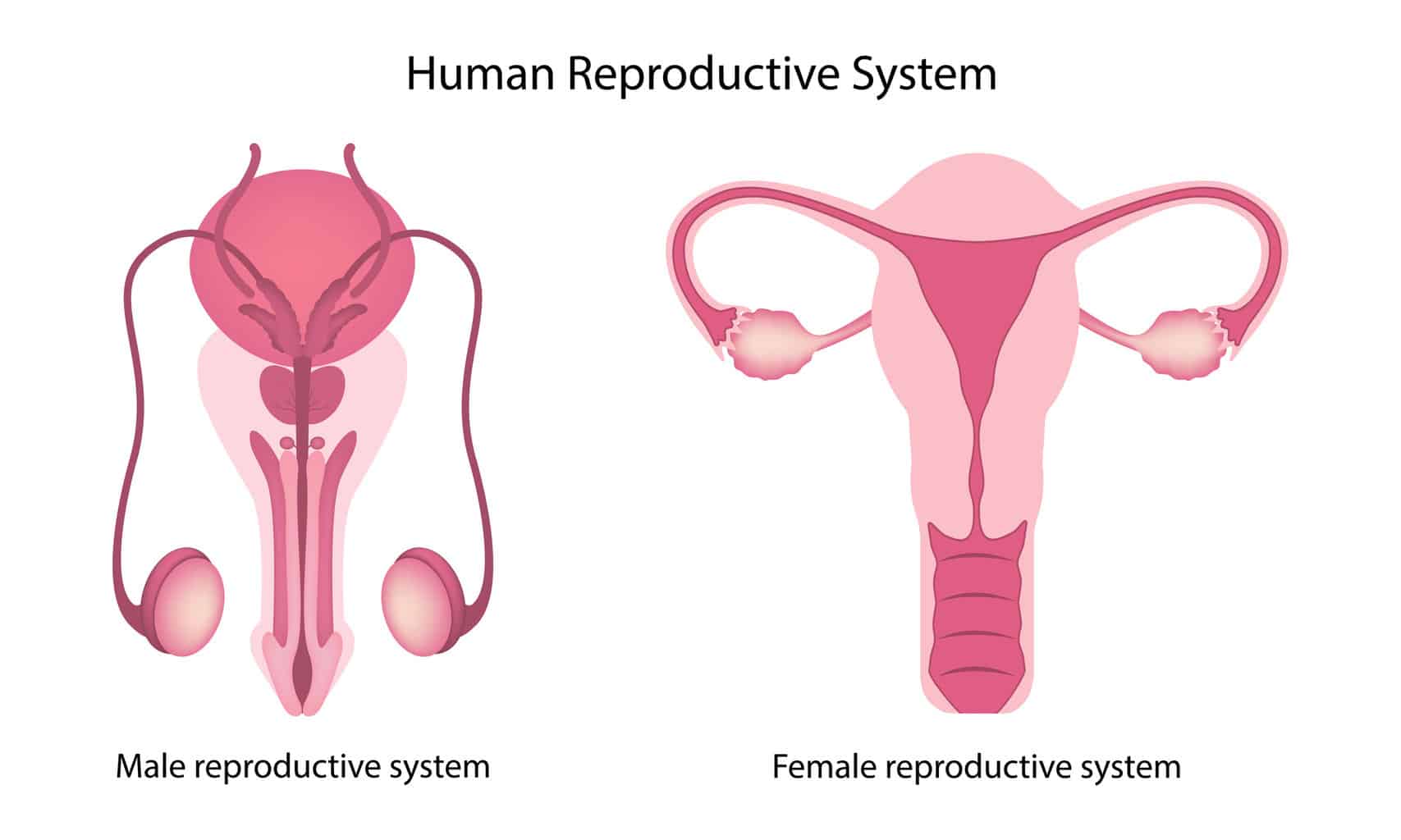Reproductive System

The reproductive system is a collection of organs and tissues that work together to produce offspring.
The male reproductive system includes the testes, epididymis, vas deferens, seminal vesicles, prostate gland, and penis.
The testes produce sperm, which travel through the epididymis and vas deferens to be ejaculated through the penis. The seminal vesicles and prostate gland produce fluids that nourish and protect the sperm.
The female reproductive system includes the ovaries, fallopian tubes, uterus, vagina, vulva, and mammary glands. The ovaries produce eggs, which travel through the fallopian tubes to the uterus.
The uterus is where a fetus develops and grows until birth. The vagina is the canal through which a baby is born. The vulva includes the external genitalia and the opening to the vagina. The mammary glands produce milk for nursing infants.
Puberty is the stage of life when the reproductive system becomes functional. It typically begins around age 10 for girls and age 12 for boys.
During puberty, the gonads (ovaries or testes) produce sex hormones that cause the physical changes of puberty, such as the growth of sexual organs and secondary sex characteristics.
The reproductive system allows humans to reproduce and continue the species. It is controlled by hormones that are produced by the brain and the ovaries or testes.
These hormones work together to regulate the reproductive cycle, which includes puberty, ovulation, fertilization, and childbirth.
Reproductive System Topics
Ovaries
Your ovaries are invaluable... Ovaries are the female gonads and produce eggs (ova), as well as the hormones estrogen and progesterone. The ovaries are located in the pelvis, one...
Fallopian Tubes
Ensure your fallopian tubes are not obstructed... Fallopian tubes are two long, thin tubes that lead from the ovaries to the uterus. They are also known as uterine tubes or oviducts. Every month,...
Uterus
The uterus is the rock star organ of the female reproductive system! The uterus is a hollow, pear-shaped organ that is the home to a developing fetus. The uterus is made up of three layers of tissue: the innermost...
Vagina
The vagina wants what it wants! The female genitalia, also known as the vagina, is a sexually dimorphic biological structure that forms part of the reproductive system in humans and...
Testes
Take care of your family jewels! The testicles are the male reproductive glands, where sperm and testosterone (the male sex hormone) reproduced. The testicles are the two oval-shaped...
Prostate
Prostate is a small gland in men that is part of the reproductive system... The main parts of the male reproductive system are the testicles, epididymis, vas deferens, seminal vesicles, prostate gland, and penis. The...
Penis
Keep your pecker healthy! The penis is an external male sexual organ that is used for urination and sexual intercourse. The testicles are a pair of internal male reproductive...